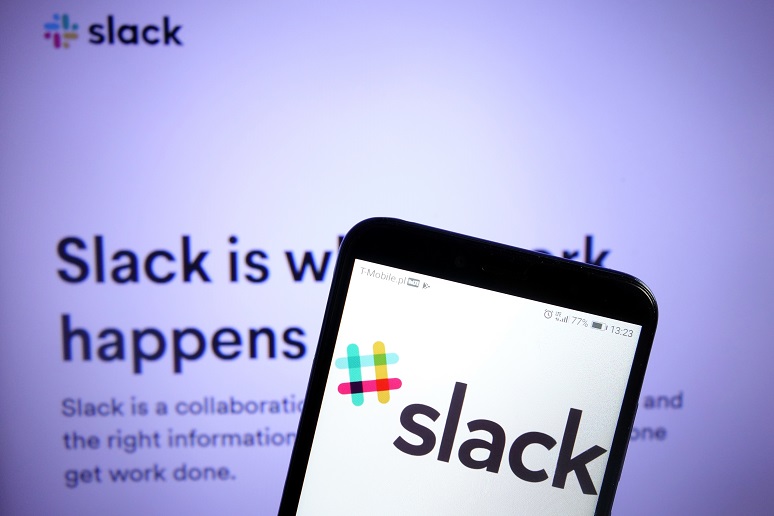Last week, enterprise software company Slack introduced
Slack Connect, which extends its channel-based messaging capabilities to allow 20 organizations to work together in a single collaborative channel. After three months of customer testing, its launch marks a major step in Slack's growth strategy, building on functionality that was already a major differentiator against its arch-rival Microsoft Teams.
Building on a Successful and Differentiating Foundation
Since the launch of cross-organization channels — which Slack previously referred to as shared channels — they have become a critical piece in the company's offering and are now used by 41,000 paying customers and more than one million individual Slack users.
The feature allows businesses to collaborate securely with partners and customers from within their existing Slack workspace, while giving IT administrators security controls and visibility and enabling retention policies to be applied in the same way as for internal channels. In expanding this to allow multiple organizations to participate in a channel, Slack opens up a host of new possible usage scenarios, including industry groups or communities, consortiums, or holding groups of companies or supply chain networks.
This latter example is the most exciting opportunity for Slack, particularly given that organizations can incorporate workflows and apps into their business-to-business channels in the same way as in their internal channels, enabling business processes and application data to be integrated into channel discussions with enterprise-grade security and controls.
Over time, Slack envisions supporting enterprise applications that span multiple organizations within channels, for example, enabling full visibility of an end-to-end supply chain process for all parties involved. Customers such as Nando's and Fastly are already heavy users of shared channels for business-to-business processes. Nando's uses them to coordinate its delivery network through partners such as Deliveroo, and Fastly to aid customer service and support.
A Platform for an Ambitious Strategy
It's this longer-term vision that really underscores the importance of this announcement for Slack. There's a reason why the feature has been rebranded as Slack Connect rather than just "multi-org shared channels," which is how it has been referenced in discussions before the release. This is just the first step in a much longer journey of product development that sees Slack move toward its mission to replace email, or rather to address the business problems that email solves in a new and more effective way.
At the heart of this is the direct messaging in Slack Connect that lets businesses interact with their partners and suppliers. Currently, users can send direct, one-to-one messages to anyone they share a channel with. However, Slack wants to make it easy for users to invite any external contacts to a direct message conversation, even before a channel is shared. The company is positioning the new tool as a solution to the challenge of employees using consumer apps like WhatsApp for this type of external one-to-one communication.
This would also provide a new opportunity for viral adoption of Slack, a way to engage new users and help them see the opportunities of communicating in the platform before a formal need for a channel exists. It would also take Slack into a whole new realm of one-to-one communication and business networking, which is an interesting direction that I look forward to hearing more about.
But the move raises all sorts of questions about how Slack will guarantee the identity of individuals and avoid the risks of spam and phishing that have befallen email. There are also questions about how the company will balance this approach with the current organizational controls that it has carefully built into the Slack Connect model.
Slack is taking an "author aware" approach to security and compliance support for externally shared channels, meaning that each organization can apply retention and data loss prevention policies to — and in turn modify or redact — any content created by their employees. Companies can't alter or redact content created by participants from other organizations, although they can set up alerts for this type of activity. Organizations can control who can create or participate in external channels and can choose whether to require approval to accept invitations to such channels. It's not clear how a more open approach to direct messaging would fit in this type of admin-controlled model.
A Healthy Roadmap for Slack Connect
Slack Connect is currently available to all customers of paying teams in Slack, but users in these organizations can invite any other company to a channel. If they're not an existing Slack customer but get invited by a paying customer to collaborate in a channel, they'll get a free 90-day trial. Although Slack has no plans to extend this capability to users of its free service beyond the trial period, the company has committed to making this invitation process more seamless for new customers, something that's particularly important given its plans for direct messaging.
Other notable items on the horizon for Slack Connect include a calendar app that will suggest meeting slots for different calendar systems in different organizations and support for enterprise key management within business-to-business channels. The company is also working on enabling Slack Connect integration for its email bridge feature, which will enable people who aren't Slack users to participate in channel discussions from their email client.
Will This Be the Winning Formula for Slack?
It's been a busy few months for Slack, and not just because of the spike in adoption of its technology in response to COVID-19, which saw it add 90,000 new customers in three months, compared with 60,000 in the whole of 2019. The company has also launched
a new user interface for its application and announced
a deal to embed Amazon Chime — Amazon Web Services' voice and video conferencing technology — making it available to all customers for free.
Against this backdrop, Slack Connect is still the biggest announcement from the company in 2020, not least because it highlights one of the biggest sustained differences between Slack and Microsoft Teams. Slack's innovation in this area, mixed with its strength in enabling processes to live within Slack channels and its impressive third-party integration and developer strategies, means that it continues to thrive even as Microsoft Teams also continues its path of unprecedented growth.
The challenge for Slack continues to be how it converts the momentum of grass-roots viral growth into increased revenue growth. It's betting on Slack Connect as a winning formula here, as a way to accelerate growth in paying customers. We'll have to wait and see if Slack succeeds, but one thing's for certain: The battle in this market is by no means over.










